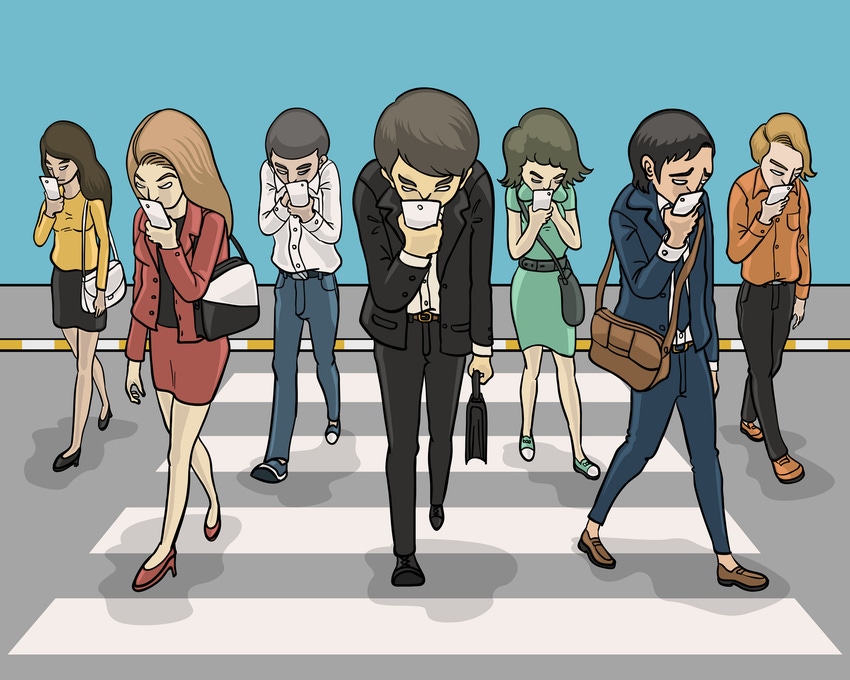While its very existence is still hotly debated, research from App Annie has confirmed the app economy is real and growing fast.
January 18, 2017

While its very existence is still hotly debated, research from App Annie has confirmed the app economy is real and growing fast.
Total usage of apps across the course of 2016 increased 25% in comparison to 2015, with consumers having their heads down for a total of roughly 900 billion hours. While this might seem like an extraordinary number to begin with, the growth was primarily fuelled by the developing markets where smartphones sales are holding up the sluggish industry. Brazil accounted for the biggest rise, whereas India topped the list for collective time.
Total downloads are another area which showed growth, increasing by 15% year-on-year to 90 billion. Once again, this growth was underpinned by the developing markets, as the number of apps per user remained steady, though countries like India, Mexico and Brazil saw an increase in the number of smartphone users.
Another important area to note, is the contribution of non-gaming apps. Non-gaming apps, for instance online banking or work apps, contributed more to the growth figures than the gaming apps actually did. Although games accounted for more downloads, the increased growth of non-gaming apps indicates mass acceptance of the connected era. The stats support the theory that more consumers are using smartphones and other such devices to run day-to-day aspects of their lives, shopping and finance for instance, welcoming the digital economy and beginning the obituary of the personal computer.
On the financial side of things, revenues paid to app publishers directly from the iOS and Google Play store topped $35 billion worldwide through 2016, representing a 40% increase. This in itself is a significant number, but once third-party app stores and in-app advertising revenues are accounted for, the App Annie team estimates revenues now exceed $90 billion annually.
As one may assume, the majority of these revenues come from the gaming category, accounting for 75% of iOS revenues and 90% of Google Play’s. This should hardly come as a huge surprise, as non-gaming apps primarily serve the purpose of customer engagement and experience. Think about banking applications or mapping technologies, the majority of the time these are value adds from businesses which already account the individual as a customer or user.
Perhaps another unsurprising claim is that Pokémon Go was the most successful game across 2016. The launch was surrounding in fan nostalgia, frustration over connection issues and predictions about how much cash the franchise could bring in. With download rates breaking records all over the world, and usage remaining strong beyond the initial euphoria phase, the app brought in $800 million in revenue faster than any other game, reaching the milestone in just over 100 days. In comparison, Candy Crush took more than 250 days and Clash of Clans, more than 500.
The research also highlighted that monetization of the app economy only comes after the growth figures have stabilized. There would appear to be a period were users are utilizing free apps as much as possible, before finding more value in the premium apps. The UK, US and Japan for instance, are countries where the growth and time metrics have stabilized, though monetization is beginning to accelerate. Although markets such as India and Brazil offer potential for huge profits, it would appear this is still a couple of years away.
Video was another area which grew healthily, perhaps explaining the reason numerous operators in the US have backed away from unlimited data offers due to the strain placed on the network and bank balances. YouTube was by far and away the leader for time spent in-app for both the US and UK, though from a revenues perspective Netflix led the way, partly due to the introduction of in-app subscription purchases.
While the statistics do not bode well for those who enjoy talking to people in real-life, the research does highlight the app economy is not a myth put out there to scare traditional businesses, but is real and thriving. Over the course of 2017, it would be fair to assume apps will continue to disrupt traditional practises as IoT becomes more prominent in areas such as retail, and the idea of the connected economy becomes more normalized in the eyes of the consumer.
About the Author(s)
You May Also Like








.png?width=300&auto=webp&quality=80&disable=upscale)


_1.jpg?width=300&auto=webp&quality=80&disable=upscale)


.png?width=800&auto=webp&quality=80&disable=upscale)